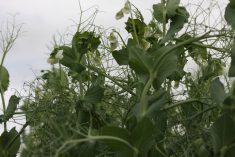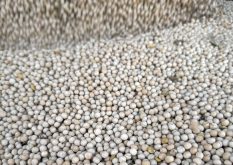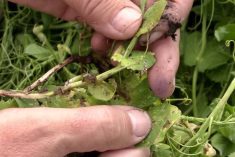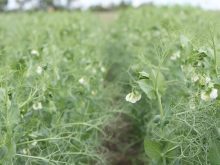Trade data confirms what analysts had been forecasting: China is buying a lot of Russian peas.
The country imported 427,600 tonnes of Russian product during the first four months of the 2023-24 crop year (July to October).
That is just slightly less than the 465,940 tonnes bought from Canada.
Read Also

Fertilizer method’s link to emissions studied
A researcher says others studying greenhouse gas emissions aren’t considering how the loss of nitrogen into the atmosphere correlates with fertilizer application or if there is an impact to yield.
Russia is swiftly moving into a market that used to be completely dominated by Canada.
The good news is that Canada’s total exports for that period are very much in line with the previous two years because, while its market share is way down, China’s overall import volumes are up.
The country has purchased 955,880 tonnes of peas during the first four months of the 2023-24 campaign, or nearly double the amount for the same period in each of the previous two years.
Gaurav Jain, analyst with AgPulse Analytica, thinks imported peas are once again working their way into Chinese feed rations.
The U.S. Department of Agriculture’s Foreign Agricultural Service (FAS) thinks that is the case for a lot of crops because of the high price of corn in China.
“The availability of sufficient lower-priced alternative grains in the market will squeeze corn use in feed,” it said in its recent China Grain and Feed Update report.
The Chinese government estimated the country’s hog herd in June 2023 was 435.2 million head, one percent higher than the previous June.
FAS expects the pig crop to decline by one percent in 2024 due to lower sow inventories in 2023.
But those pigs are still going to require plenty of corn and other feed substitutes.
The most obvious substitute is wheat. FAS estimated there are 22 million tonnes of new crop sprouted wheat in China, of which 20 million tonnes will be used as feed.
Another 18 million tonnes of old stock rice was recently offered for sale for feed purposes in Chinese auctions.
FAS also noted that China recently cancelled tariffs on Australian barley, “dramatically lowering” feed barley prices in that country.
The report mentioned nothing about imported peas, but Jain thinks there is a big opportunity for feed peas as well.
But it will likely be usurped by Russian product, which was only approved for import by China this summer.
“High Canadian (pea) prices had kept that (feed) demand restricted in the first half of 2023,” he said in an email.
“With the flow of cheaper Russian peas, this should be more prominent.”
He said he thinks China will import 2.3 million tonnes of peas in 2023-24, with 1.2 million tonnes coming from Russia and one million tonnes from Canada.
But the bias is for an even higher import number, with Russia picking up the extra business.
Canadian exports to China have surged lately because of normal harvest pressure.
In October, Canada shipped 256,000 tonnes of peas to China compared to Russia’s 228,000 tonnes.
He expected the harvest surge will show up in November’s statistics as well.
“But beyond that, it should be Russian inventory to rule the trade flow,” said Jain.
He also noted that Canadian exports to China could shrink if the U.S. slaps anti-dumping duties on Chinese pea protein imports in the December 2023 through March 2024 period.
Contact sean.pratt@producer.com


















